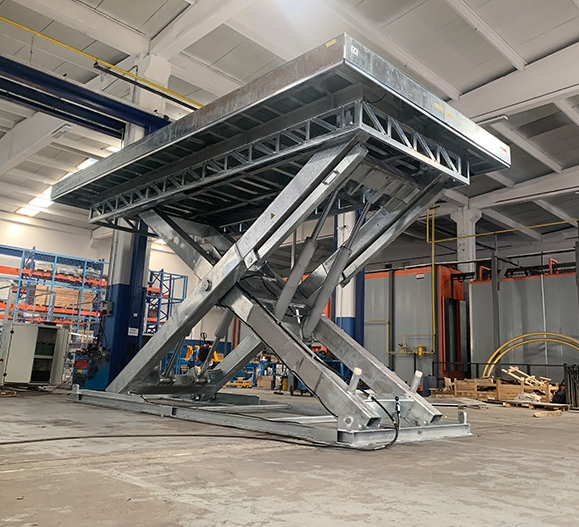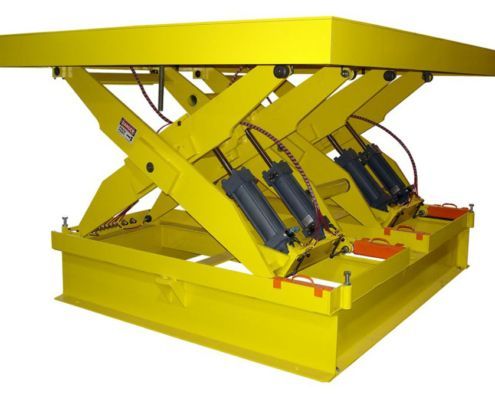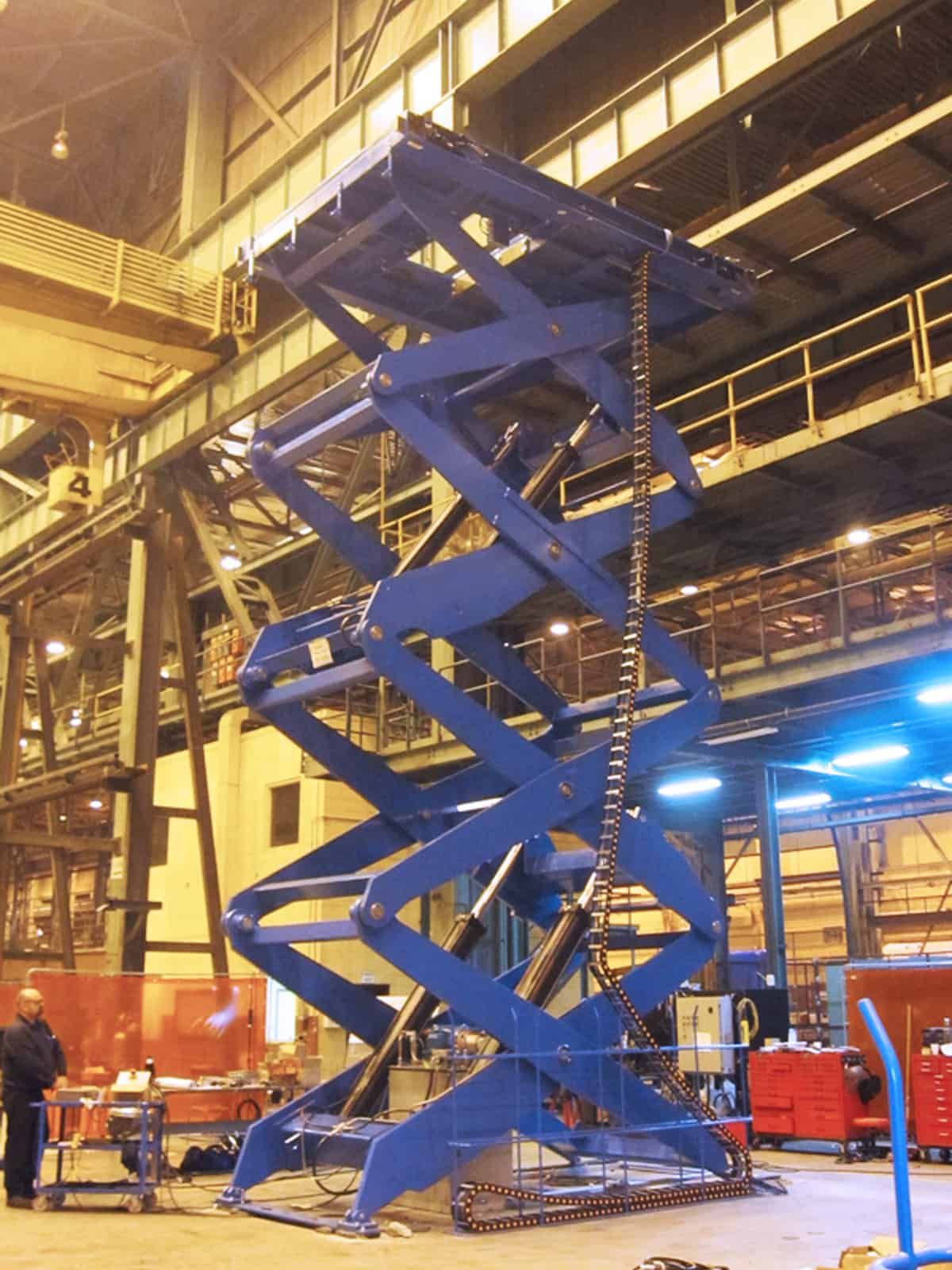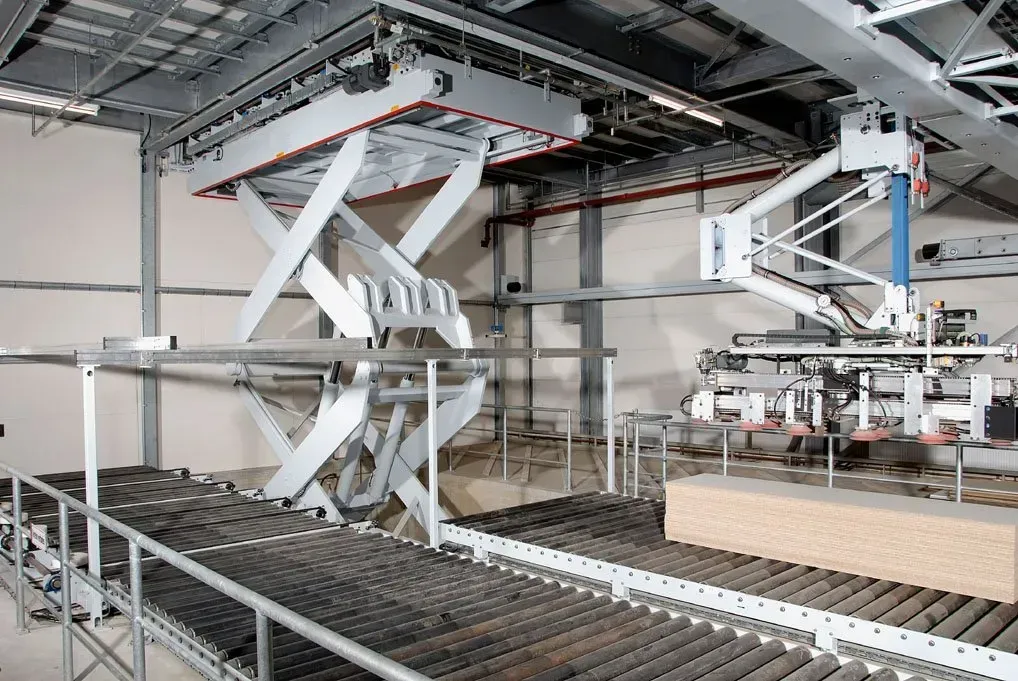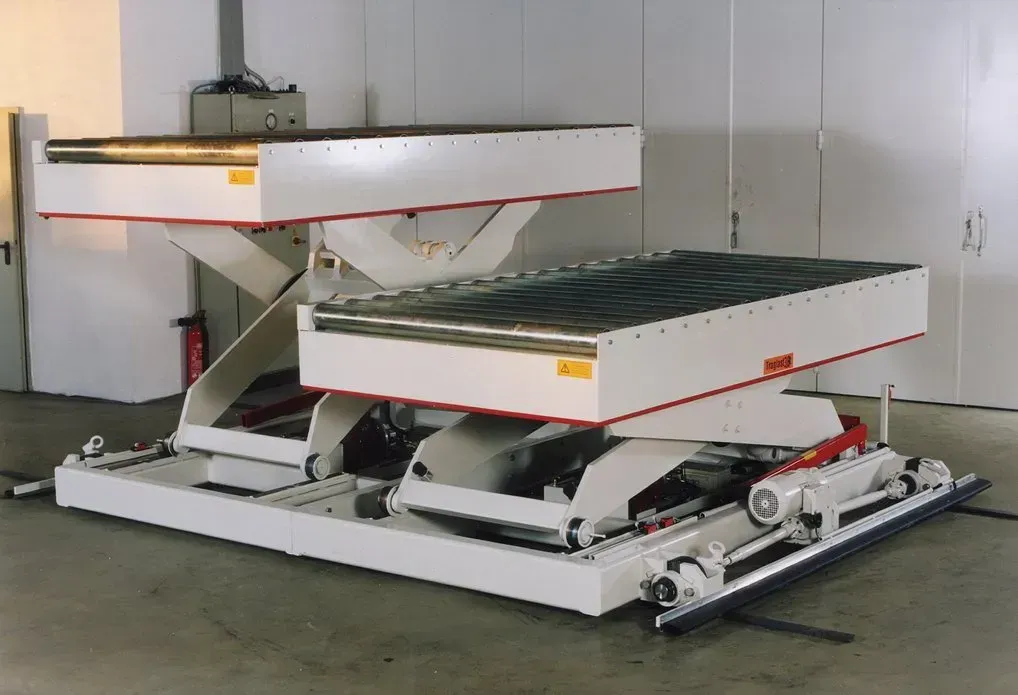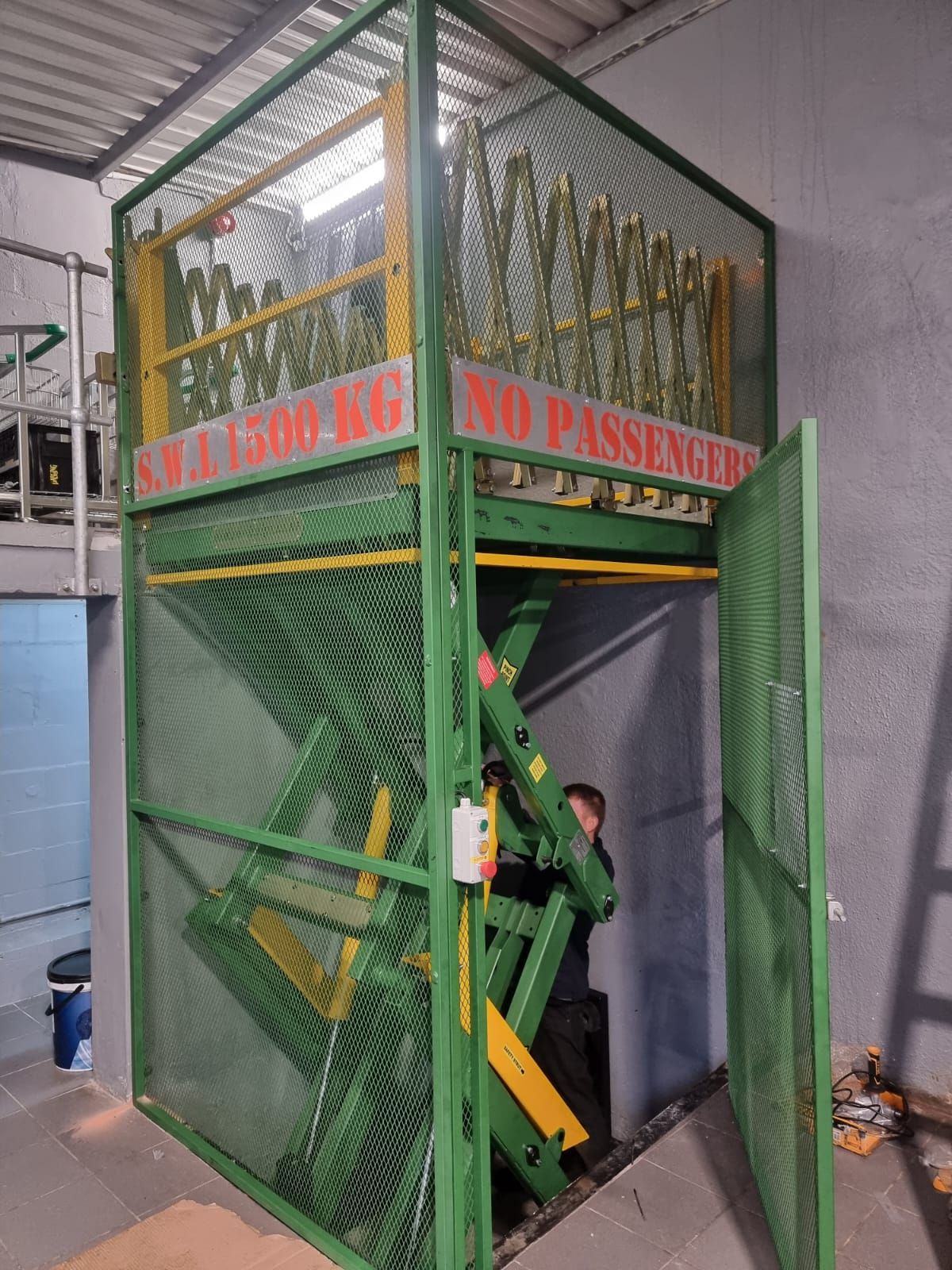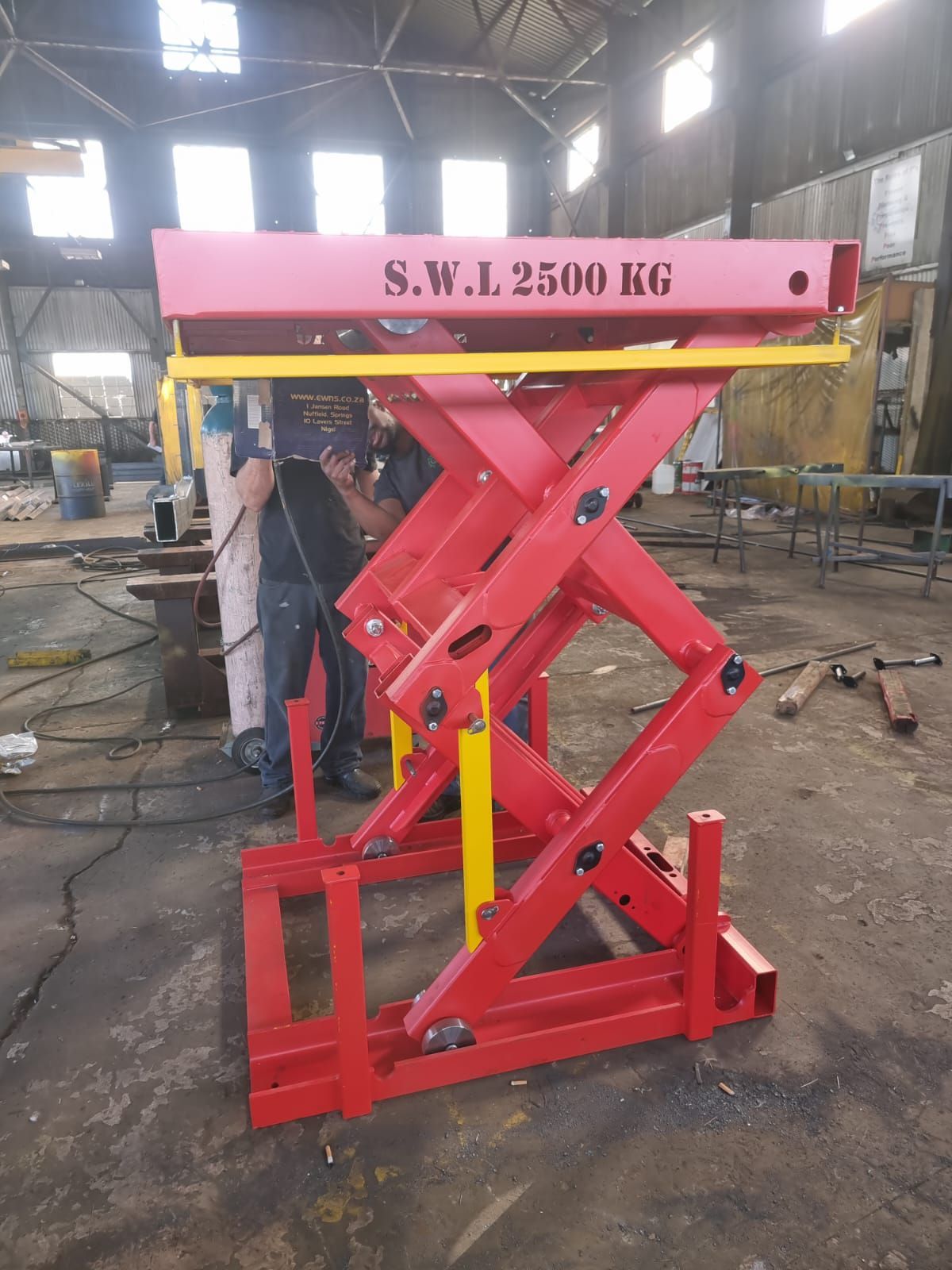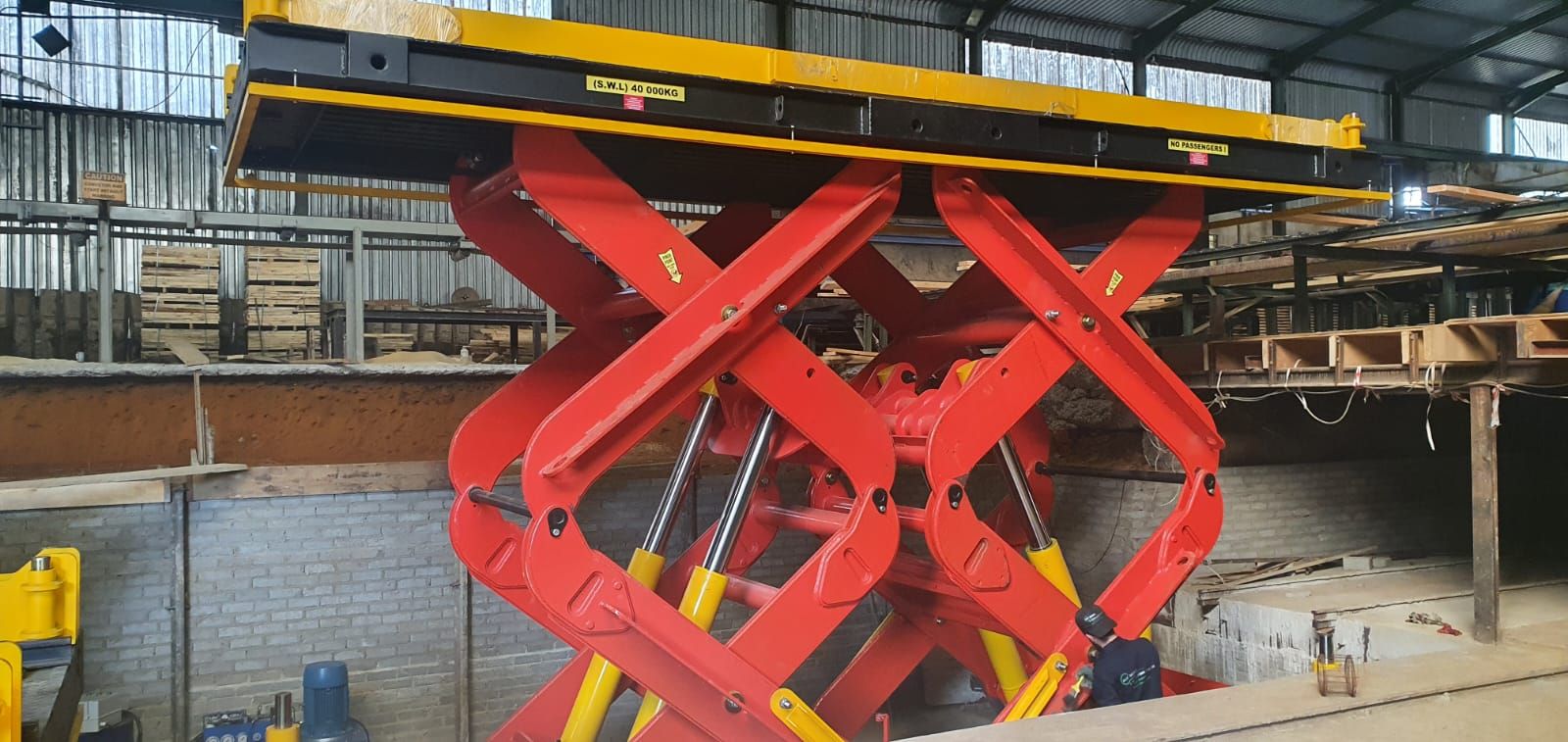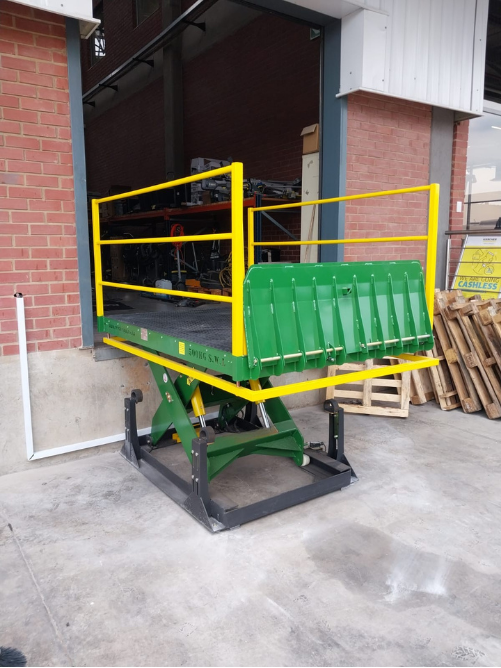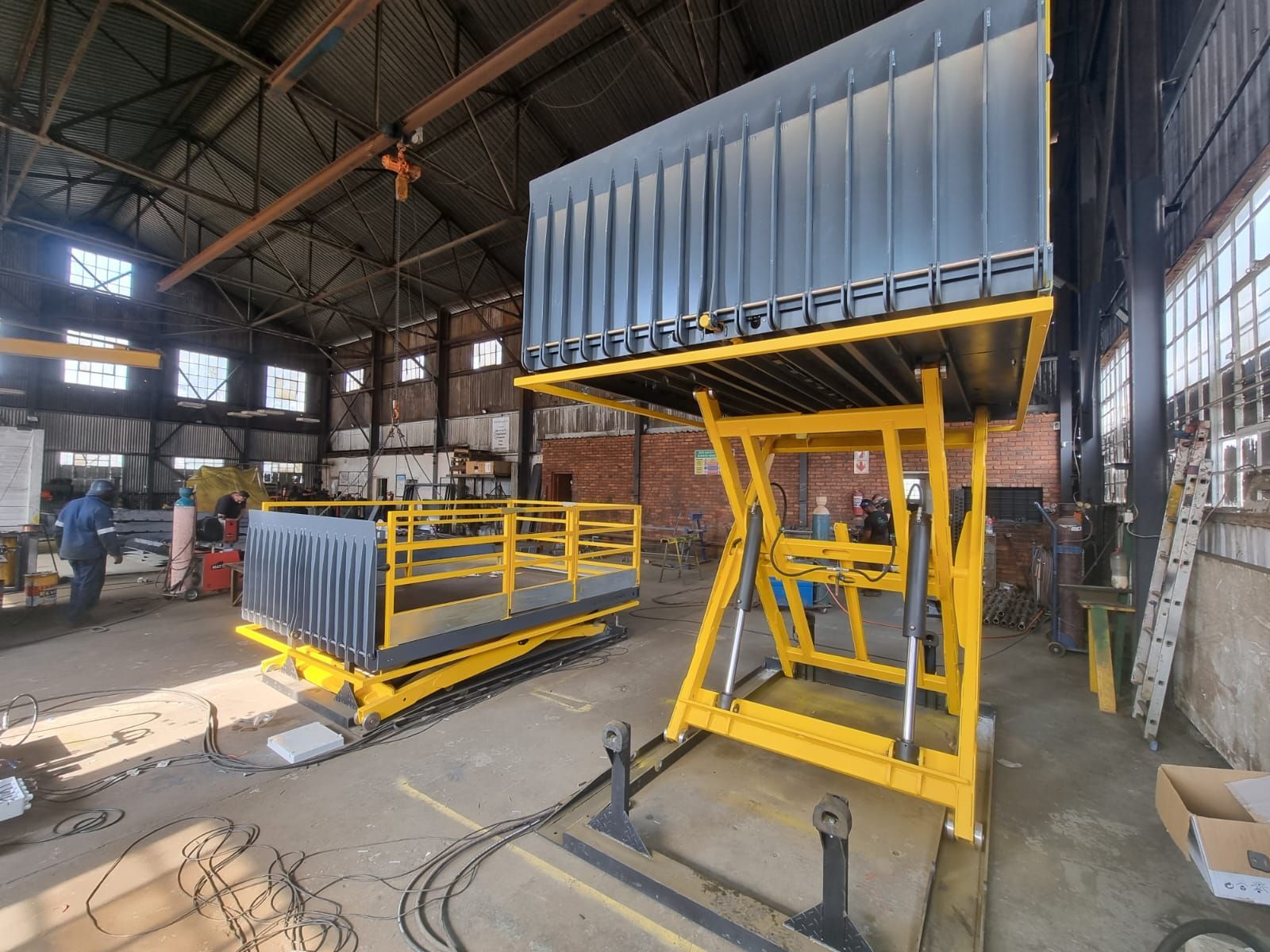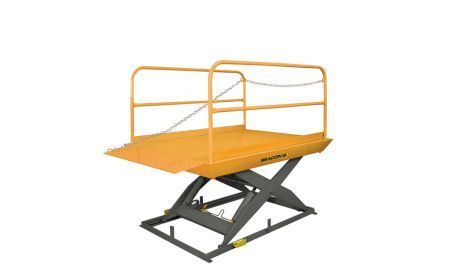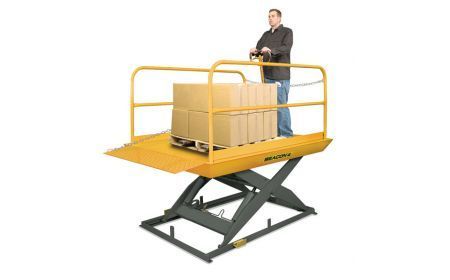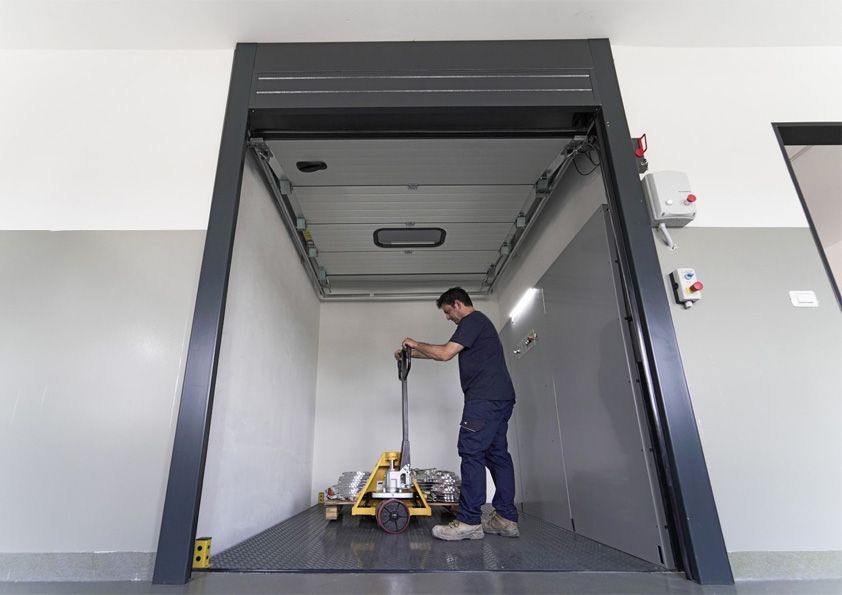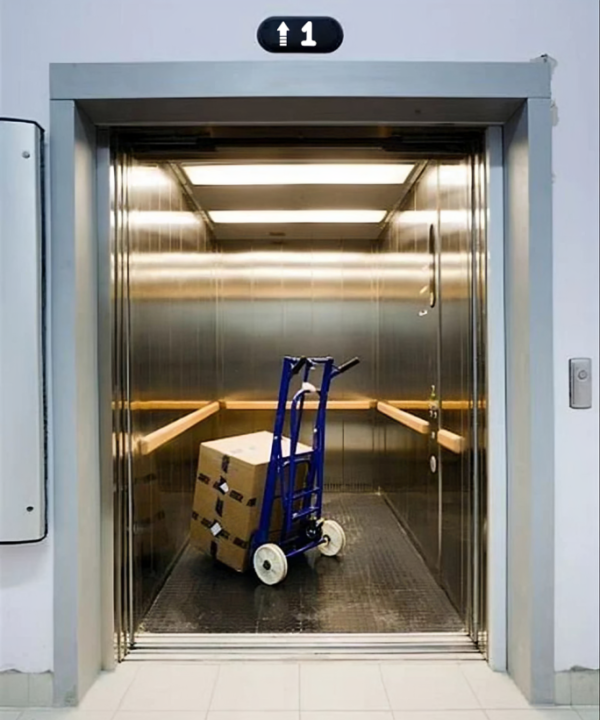Scissor, Goods & Passenger Lifts
Engineered for Safe, Reliable Vertical Movement
From warehouses to multi-level facilities, Weston delivers heavy-duty lift solutions
designed to move goods and people with maximum safety, efficiency and performance.
Scissor Lifts
These are versatile tools widely used across industries for their efficiency and safety. Here's a breakdown of their uses and benefits:
Uses:
- Warehousing: Helps maximize vertical storage space and speeds up retrieval processes.
- Manufacturing: Improves efficiency in production lines, such as food processing and chemical manufacturing.
Benefits:
- Improved Productivity: Adjustable work surfaces reduce cycle times and enhance efficiency.
- Safety: Minimizes repetitive lifting and strain, reducing workplace injuries.
- Ergonomics: Adjustable heights accommodate different operators, reducing bending and twisting.
- Compact Design: Small footprint makes them suitable for confined spaces.
- Cost-Effective: Hydraulic models are energy-efficient and economical.
- Scissor lifts are indispensable for tasks requiring elevation, offering a balance of functionality and safety.
Scissor Lifts on Production & Assembly Lines
Scissor lifts have evolved from general-purpose work platforms into specialized assets seamlessly embedded within production and assembly lines. By delivering precise, vertical positioning directly at the point of need, they accelerate throughput, enhance worker safety, and optimize line balancing without disrupting existing workflows.
Integration into Production & Assembly Workflows:
Embedding scissor lifts into a conveyor or roller track ensures that assemblies move vertically as part of a continuous process. Rather than relying on manual conveyors or fixed-height stations, manufacturers can program lifts to index parts through multiple work zones, ranging from subassembly to final inspection, without extra handling steps or reorientation.
Core Uses on Assembly Lines:
· Automated Part Transfer
- Scissor lifts act as vertical conveyors, shuttling assemblies between stacked work cells.
- Synchronization with line PLCs enables precise timing, minimizing buffer zones and reducing WIP inventory.
· Ergonomic Work Positioning
- Inline lifts adjust assembly heights to each operator’s optimal posture, cutting reach zones and eliminating stooping.
- Rapid height changes let teams tackle high- and low-mount components without swapping tools or platforms.
· In-Line Quality Inspection
- Lifts position products at inspection bays equipped with cameras, sensors, or manual gauges.
- Consistent platform elevation ensures repeatable vantage points, raising inspection accuracy and throughput.
Benefits:
Boosted Throughput By integrating vertical motion directly on the line, scissor lifts reduce hand-off time and eliminate secondary handling steps.
- Enhanced Safety Guardrails, interlocked gates, and light-curtain integrations protect operators and prevent line stoppages due to falls or pinch-point incidents.
- Improved Line Flexibility Programmable lifting routines allow quick changeovers between product variants, shortening setup time and supporting just-in-time strategies.
- Superior Ergonomics Adjustable heights reduce musculoskeletal strain, lowering injury rates and associated absenteeism costs.
Scissor lifts tailored for production and assembly lines transform vertical motion from an afterthought into a core component of lean manufacturing. By blending safety, ergonomics, and automation-ready controls, they help factories meet rising output demands without sacrificing quality or workforce well-being.
Docking Scissor Lifts
Docking Scissor Lifts are hydraulic platforms used to bridge the gap between a loading dock and a truck bed, facilitating the efficient and safe loading and unloading of goods. They are commonly used in loading bays, especially in retail, manufacturing, and logistics, where there's a need to move freight between different heights. Here's a more detailed explanation:
What they are:
- Docking scissor lifts are essentially hydraulic scissor lifts designed to operate at loading docks.
- They consist of a platform that can be raised and lowered, as well as extended, to match the height of the truck bed.
- These lifts are designed to handle a wide range of truck sizes and styles.
How they work:
- The lift is typically installed in a shallow pit at the loading dock, so the platform is flush with the floor when fully lowered.
- When a truck arrives, the platform is raised to the height of the truck bed.
- This allows for a smooth transition for pallet jacks, forklifts, and other equipment to move goods between the truck and the dock.
- Some lifts also include a tilting deck and swing lip to create a ramp, further aiding in the movement of goods.
Key features and benefits:
- Versatility:
- They can be used with various truck types and can be adapted to different load capacities and travel heights.
- Safety:
- They often include features like handrails, gates, and safety bars to prevent falls and ensure a safe working environment.
- Efficiency:
- By providing a stable and adjustable platform, they streamline the loading and unloading process, reducing downtime and increasing productivity.
- Cost-effectiveness:
- Compared to building a permanent ramp, scissor lifts can be a more economical solution for handling different truck bed heights.
- Customization:
- We offer standard models but can build custom lifts to meet specific needs.
Applications:
- Loading and unloading trucks:
- This is the primary function, especially in situations where a standard loading dock isn't available or when dealing with varying truck bed heights.e offer standard models but can build custom lifts to meet specific needs.
In summary, docking scissor lifts are a versatile and efficient solution for loading and unloading goods at docks, offering a safer and more productive alternative to traditional ramps or other methods.
Goods Lifts
Also known as freight elevators, are essential for transporting heavy goods and materials efficiently. Here's a breakdown of their uses and benefits:
Uses:
1. Warehouses: Ideal for moving pallets, boxes, and bulk goods between floors, streamlining supply chain operations
2. Factories: Used to transport raw materials, machinery, and finished products, enhancing workflow efficiency.
3. Retail Stores: Facilitates the movement of inventory between storage areas and display floors.
Benefits:
1. Increased Efficiency: Reduces manual labor and speeds up the transportation of goods.
2. Improved Safety: Minimizes the risk of injuries associated with manual handling of heavy items.
3. Cost Savings: Reduces labor costs and operational time, making it a cost-effective solution.
4. Space-Saving Design: Compact and customizable to fit various building layouts.
5. Enhanced Productivity: Allows businesses to focus on core operations by automating goods movement.
Goods lifts are a valuable investment for industries that require frequent and safe transportation of goods.
Passenger Lifts
Passenger lifts, also known as elevators, are essential vertical transportation systems used in various buildings to facilitate movement between floors. Here’s a professional summary of their uses and benefits:
Uses of Passenger Lifts:
- Accessibility – Provides easy access for individuals, including those with mobility challenges.
- Efficient Vertical Transport – Enables quick movement between floors in high-rise buildings.
- Commercial & Residential Use – Commonly installed in offices, malls, hotels, and apartment complexes.
- Heavy Load Transport – Some passenger lifts are designed to carry goods along with people.
Benefits of Passenger Lifts:
- Convenience & Time-Saving – Reduces travel time compared to stairs, improving efficiency.
- Enhanced Safety Features – Equipped with emergency braking systems and backup power options.
- Space Optimization – Maximizes building space by eliminating the need for large staircases.
- Energy Efficiency – Modern lifts incorporate energy-saving technologies to reduce power consumption.
- Improved Property Value – Increases the marketability of buildings by offering modern amenities.
- Aesthetic Appeal – Sleek designs enhance the interior look of commercial and residential spaces.
Dumbwaiters
These are small freight elevators designed to transport goods rather than people. They are commonly used in commercial, residential, and industrial settings to improve efficiency and convenience. Here’s a professional summary of their uses and benefits:
Uses of Dumbwaiters:
- Food & Beverage Transport – Frequently used in restaurants and hotels to move food, dishes, and supplies between floors.
- Medical & Healthcare Applications – Hospitals utilize dumbwaiters to transport medical supplies, linens, and patient meals.
- Residential Convenience – Homeowners install dumbwaiters to move groceries, laundry, and household items between floors.
- Retail & Commercial Use – Businesses use dumbwaiters to transfer documents, merchandise, and other materials efficiently.
- Industrial & Security Applications – Banks and factories employ dumbwaiters for secure transport of money, tools, and small equipment.
Benefits of Dumbwaiters:
- Efficiency & Time-Saving – Reduces manual labour and speeds up the movement of goods.
- Space Optimization – Compact design allows installation in tight spaces where full-sized elevators are impractical.
- Safety & Ergonomics – Minimizes the risk of injuries by eliminating the need to carry heavy items up and down stairs.
- Cost-Effective Solution – More affordable than traditional elevators while providing similar convenience.
- Customizable Features – Can be adapted with heating elements for food, security locks for sensitive materials, and intercom systems for communication.
Ready to Streamline Your Loading Bay?
Whether it’s passenger lifts, heavy-duty goods lifts or scissor lifts, Weston delivers tailored solutions built for efficiency and safety.

